💰 1. Your #1 Job Is Sales: Most business owners fail because they don’t make sales and marketing their top priority
Imagine you just launched your dream business. You’re pumped. You’re hopeful. Then you come across this stat:
96% of small businesses fail within a few years.
Ouch.
It gets worse. Of the tiny 4% that survive, 95% never make it past $1 million a year—and most trap the owner in an 80-hour workweek just to keep the lights on.
Basically, they build a prison instead of a business.
That’s exactly how the book Sell Like Crazy starts—by slapping you with reality. But it’s not meant to scare you. It’s meant to wake you up. And it’s written by someone who actually knows what he’s doing.
Sabri Suby is an Australian marketing consultant who’s helped over 150 companies generate more than $400 million in sales. This book is his battle-tested guide to growing a business with real marketing and sales—not theories.
Why do most business owners fail?
Simple: they spend too much time doing the work and not enough time selling the work.
Let’s say you’re a great web designer or you bake the world’s best cookies. That’s awesome—but it’s not enough. Being good at your craft doesn’t mean you’ll succeed. You also need to know how to market and sell what you do. That’s the real game.
Most people get stuck working in the business, doing all the little day-to-day tasks. But the real success comes from working on the business—especially building systems that bring in leads, clients, and cash. Every. Single. Day.
You must focus on high-leverage activities
Sabri Suby and other super-successful entrepreneurs know this. They focus on high-leverage activities—the stuff that rings the cash register. That means:
- Creating irresistible offers
- Writing sales copy
- Optimizing funnels
- Running ads
- Making content that sells
You’ve probably heard of the 80/20 Rule—that 80% of your results come from 20% of your actions. Suby takes it further…
64% of your results in business come from just 4% of your actions. That 4%? It’s marketing and sales.
Your top priority must be marketing and sales
So yeah, checking email 10 times a day, tweaking your logo, or staring at your analytics isn’t the move. That’s low-value work.
Instead, figure out what your time is worth—say, $50/hour—and stop doing $20/hour tasks. Hire someone else to mow the lawn or clean the house. You’re not saving money by doing it yourself—you’re losing money by not spending that time on sales.
The billionaire John Paul DeJoria, who once sold shampoo door-to-door while sleeping in his car and now runs a billion-dollar hair-care company, doesn’t even have an email account. Why? So he can avoid low-value demands on his time and stay focused on what actually grows his business.
In The 1-Page Marketing Plan, Allan Dib also emphasizes that: “By far the biggest leverage point in any business is marketing. If you get 10% better at marketing, this can have an exponential or multiplying effect on your bottom line.”
Translation? Small improvements in your marketing can lead to massive results in revenue. Way more than getting 10% better at delivery, admin, or operations. That’s why sales and marketing aren’t optional—they’re the engine that drives everything else forward.
- Your real job isn’t what you do—it’s selling what you do.
- The highest-leverage use of your time is generating revenue—so focus 80% of your time on sales and marketing activities, so you can build systems that bring in new clients and customers every day.
- Stop doing low-value tasks that you can hire others to do.
🛠️ 2. You Get Paid to Solve Problems: To succeed in sales, stop pitching your product or service and start talking about their problems instead
When Sabri Suby was 17, he landed his first real sales job—and it was awful.
Picture this: 13 people jammed into a small shipping container that had been converted into an office. Each one making 100 cold calls an hour, every day. And Sabri? He was the worst salesperson in the room. Everyone hung up on him or worse, they hurled insults and accusations at this young kid.
But Sabri had one thing going for him: he didn’t quit. He’d grown up watching his mom work multiple jobs as a single parent while still showing up with a smile. That relentless work ethic stuck with him.
The mindset that changed everything
One day, Sabri decided to try something different.
He stopped trying to pitch his product. Instead, he made the conversation all about the person on the other end. He asked about their business. Their struggles. What problems they were dealing with.
And even when they tried to ask what company he was calling from, he turned the spotlight right back to them.
That’s when everything changed.
People stayed on the phone longer. They talked to him. They opened up. And eventually—they bought. Sabri went from dead last in that old container to being the #1 salesperson and making $2,000 per week.
Then he moved to London and worked in sales for all sorts of businesses, from small operations to companies with thousands of salespeople. And he was the #1 salesperson. Every. Single. Time.
So what did he figure out? Sales isn’t about your product. It’s about the problem you solve.
Russell Brunson is the founder and CEO of ClickFunnels, a sales funnel software company that does over $100M per year in revenue. In his book Expert Secrets, he shares this insight from Ryan Moran:
“An entrepreneur is someone who takes personal responsibility for a problem that was not their own.”
Sales x Advertising = Massive Leverage
Sabri eventually hit a wall. No matter how good he was at selling, he could only talk to so many people in a day. So he turned to marketing and advertising—because it’s just like sales, but at scale.
Instead of doing a pitch one-on-one, you can record it once, run ads, and reach millions. Same message, 1,000x more people. That’s leverage.
But he didn’t get it right away. He wasted nearly half a million dollars on courses and gurus before realizing the best lessons came from old-school copywriters like Robert Collier, Eugene Schwartz, and David Ogilvy. He applied those lessons to build one of the fastest-growing marketing agencies in Australia.
Over 100 years ago, Claude Hopkins, the “father of advertising,” said “Advertising is multiplied salesmanship. It may appeal to thousands while the salesman talks to one.”
Read our summary of Scientific Advertising by Claude Hopkins
You don’t have a traffic problem—you have a sales problem
Most business owners think they need more traffic. More eyeballs. More clicks. But traffic isn’t the issue. Traffic is a commodity. You can buy it from Facebook, Google, or LinkedIn—just like buying eggs at the store.
The real issue is conversion. If you can spend $1 to bring someone to your site and earn $2 in return, congrats—you now have an unlimited marketing budget.
A real business is one that can predictably turn strangers into customers. If you’re relying on free traffic and hoping for virality, you’re building on shaky ground. Algorithms change. But paid advertising has been around for hundreds of years, in one form or another. It’s a reliable revenue stream—as long as your sales system works.
- Great sales is not about pitching your product or service—it’s about focusing on the other person and helping them solve real problems.
- Advertising is just sales at scale—and it’s the biggest leverage point in your business. Your real problem is not traffic. You can buy all the traffic you want if you can reliably convert strangers into customers.
🔍 3. Know Your Customer Deeply: To sell anything well, you must understand your market completely, including their biggest desires, fears, and dreams
Legendary copywriter Robert Collier once said:
“Always enter the conversation already taking place in your customer’s mind.”
How do you do that?
Most business owners are obsessed with their product or service, so they have little idea what their customers are thinking. Instead, you want to start by looking at your customer, so you can understand them on a very deep level—including their fears, desires, and what’s at the top of their mind right now.
Go beyond the basic research
Sure, you can start with the basics—like their typical age, gender, location, and job title. But don’t stop there.
Dig deeper:
- What do they want most related to your offer?
- What scares them and keeps them up at night?
- What frustrates them about solutions like yours?
Study your audience on social media
Go where they hang out online. Follow the Facebook groups, YouTube channels, TikTok creators, and Reddit forums they engage with.
For example, if your audience is vegan moms, search YouTube for “vegan mom,” binge the videos, subscribe to the channels, and check out the comments. The algorithm will do the rest—feeding you even more creators and content like those.
These spaces are full of real people talking about real problems. Your job is to listen.
Online reviews are a copy goldmine
Look at reviews of products or services similar to yours. See what people love and what they hate. They’ll often hand you the exact words to use in your marketing.
Pro tip: Start a doc and copy-paste their actual phrases. This is your cheat sheet for writing emails, sales pages, and ads that “enter the conversation” already happening in your customer’s mind.
Build a customer avatar
Once you’ve gathered all this, create a detailed “avatar”—a short story of your ideal customer.
Give them a name, age, location, hobbies, and a rough daily routine. Describe what they’re struggling with and what they really want. For example:
“Susan is a 36-year-old mom of two boys in Denver. She’s into yoga, knitting, and true crime podcasts. She follows a bunch of vegan YouTube channels such as X, Y, and Z. She is constantly looking for healthy, time-saving recipes. Her biggest frustration? She wants her kids to eat better, but they hate veggies and she’s running out of ideas.”
This makes your customer feel real. And when you write or sell, you’re talking to Susan—not “the market.”
Alex Hormozi has sold over $100 million worth of products—everything from gym memberships to supplements to consulting. His rule of thumb for copywriting is this:
“The point of good writing is for the reader to understand. The point of good persuasion is for the prospect to feel understood.”
When your customer feels like you get them, trust goes up—and so do your conversions.
- Great sales and marketing starts with a deep understanding of your customer. Study your audience online to find their biggest problems, desires, and frustrations.
- Use their own words when writing your copy—it instantly builds connection and trust.
- Build a “customer avatar” so you can picture exactly who you’re talking to.
🤖 4. Capture Leads Automatically: Turn your website into your best salesperson with a high-value lead magnet—so it captures, nurtures, and converts visitors into customers for you 24/7
Imagine if your website didn’t just sit there—but instead worked around the clock to bring in leads, build trust, and convert visitors into customers. Automatically. That’s not a fantasy. That’s what a sales funnel is designed to do. And it all starts with one powerful tool…
Your High-Value Lead Magnet
A lead magnet is a free piece of content you give away in exchange for someone’s email address. But not just any content—it has to be something your audience actually wants. Something that solves a real problem they’re facing.
This could be:
- A free report
- A short video or training
- A template or checklist
- A cheat sheet or guide
And even though it’s free, you should pack in real value. Why? Because you want them thinking,
“If this is what they give away for free, imagine how good the paid stuff must be!”
Here’s a legendary example of this strategy in action. In the 1950s, a little-known Wall Street firm ran a full-page ad called: “What Everybody Ought to Know About This Stock and Bond Business.”
It was 6,500 words long. No flashy graphics. Just helpful answers to common investing questions. People loved it. They cut it out, saved it, and shared it.
At the bottom was a simple offer: send in for a free booklet called How to Invest. That ad generated 3 million leads and turned Merrill Lynch into a household name.
Understand the Pyramid of Prospect Awareness
Not everyone is ready to buy right now. Picture your audience as a pyramid:
- Top 5% = actively shopping right now
- Next 30% = aware of the problem and researching
- Bottom 65% = not even thinking about it yet
Most businesses only target the top 5%—the ones ready to buy. But if you offer something valuable for free, you can capture way more people lower in the pyramid. Then, through helpful content (emails, videos, etc.), you nurture those leads until they’re ready to buy.
Think of it like dating. Most businesses try to propose on the first date: “Hey stranger, wanna buy this thing right now?” Smart marketers start by offering something helpful, building a relationship, and earning trust. Over time, the customer is way more likely to say yes—because they already know and like you.
Concrete Example of How This Works
For example, most businesses might run a Google Ad that says something like: “ABC Plumbing – Fast, Reliable, Affordable. Call Now!” That only appeals to the tiny 5% of people who are already looking for a plumber today.
But what if you ran a Facebook ad offering a free guide instead? “7 Costly Plumbing Mistakes Homeowners Make (And How to Avoid Them)”
Someone who isn’t ready to hire a plumber yet might still click, read, and give you their email. Over the next week, they get a few helpful emails from you—how to prevent frozen pipes, how to spot a leak early, when to DIY vs. call a pro.
The goal is to build trust by actually helping them take some baby steps towards their desired outcome. In this case, maintaining their home.
Now when their sink explodes two months later, guess who they think of first?
That’s the power of capturing leads from the bottom of the pyramid—and turning strangers into customers over time.
Another great resource for designing your compelling lead magnet is Alex Hormozi’s other book, $100M Leads. In it, he explains the psychology behind this strategy:
“A person who pays with their time now is more likely to pay with their money later.”
How to Make a Great Lead Magnet
Keep it simple, specific, and useful. Here’s how to make it work:
- Pick a narrow problem your customer is trying to solve
- Use a headline with emotional words like: secrets, mistakes, worst, fastest, proven
- Add a number to the title (e.g., “7 Mistakes Most New Homeowners Make”)
- Short is fine—even 2 pages or a 2-minute video can work great
Build a Simple Opt-In Page
Now create a page to promote your lead magnet. Here’s a basic formula:
- Headline: “How to [get result] without [pain] in [timeframe]” – Example: “How to Find the Lowest Car Insurance Rates in Just 20 Minutes”
- Subheadline: Briefly explain what they’re getting
- Bullet points: List a few benefits to raise curiosity
- Visual: Show what the lead magnet looks like (like a digital book cover)
- Form: Ask for name + email (the fewer fields, the better)
And then you’ve got an automated system working to capture leads, even while you sleep.
- Use a lead magnet to trade valuable info for your visitor’s email address.
- Great lead magnets are short, specific, and solve a real problem.
- Create a simple opt-in page that sells your free giveaway as if it were a real product.
💥 5. The Perfect Offer: Make your customers an offer they can’t resist by solving their biggest problem—and guaranteeing you’ll deliver the result
Let’s be real—most businesses make weak, boring offers.
They’re afraid to promise anything too bold, let alone guarantee results. The problem? That kind of playing-it-safe doesn’t stand out or serve your customers.
In this section of the book, Sabri Suby shows us how to do the exact opposite. His approach?
Make an offer so clear, strong, and irresistible that people stop scrolling and start paying attention.
Start with the end in mind
Before you create your product, write the sales pitch for it.
This forces you to focus on solving a real problem people care about—not just what you want to sell.
Too many entrepreneurs spend months building things no one wants. Instead, do your market research, find the pain points, and make sure people are hungry for the solution you’re offering.
Focus on their #1 pain
Your market doesn’t care about your product—they care about their problem.
Find the most common complaint or frustration people have in your space. Then center your offer around fixing that.
For example: When Sabri was doing marketing for a home builder, he discovered the biggest frustration of buyers was that builders took too long to finish the project. So their offer focused on solving that problem: “We’ll build your home in 7 weeks—or we’ll pay you $5,000.” In a crowded market, that offer stood out.
Add a Strong Guarantee
Scared to make a bold promise? That’s exactly why it works.
A guarantee shows you believe in your offer, which builds trust.
For example, anybody can sell “SEO marketing services.” What’s a business owners fear when buying that? They will waster their money and not get results. So Sabri’s agency targeted that concern by saying “Get ranked in Google in 90 days or you don’t pay us.” With this bold guarantee, their growth exploded.
You might be thinking, “What if people try to cheat me?” In the author’s experience, over 95% of people aren’t looking to take advantage of a guarantee unless they are legitimately dissatisfied. And on the other hand, a bold guarantee can dramatically boost your sales.
Also, many countries already require a “satisfaction guarantee” by law. So if you have to honor refunds anyway, why not use it to your advantage?
Pro tip: Add a “Reason Why.” If your offer sounds too good to be true, explain why you’re doing it. Like Casper mattress: “We’re so confident you’ll love our mattress, we’re offering a 100-night trial.”
- Build your offer around solving a painful, specific problem. Make it so good, your audience feels dumb saying no.
- Add a bold guarantee to build trust and lower risk. Guarantee a specific result, benefit, or complete satisfaction.
🧱 6. The Perfect Landing Page: Turn clicks into customers with a page that’s clear, convincing, and high-converting
Your landing page isn’t there to be clever or fancy. It’s there to convert visitors into leads or customers—fast.
And to do that, it needs a clear structure. Sabri Suby lays out a step-by-step framework you can follow to guide your visitor step-by-step toward saying “yes.”
How to write a high-converting page, step by step
Let’s break it down:
- Call out your audience. Start by making it obvious who this page is for. (Ex: “For tired new moms who want better sleep…”)
- Make a big promise in your headline. Share the result they’ll get, how fast, and without the usual hassle. (Ex: “Lose 10 pounds in 30 days—without giving up pizza.”)
- Clarify with a sub-headline. Quickly explain what the offer is and why it matters.
- Use punchy bullet points. Highlight 5–6 pain points, benefits, or secrets your audience cares about. (Ex: “The #1 mistake most people make when counting calories.”)
- Define the problem. Show you understand what they’re struggling with—build trust.
- Introduce your solution. Explain what makes your offer better than anything else out there.
- Explain the benefits (not just features). Translate features into real-life value. (Ex: “50 backlinks/month” → “Rank higher and get more traffic from Google.”)
- Show proof. Include testimonials, client wins, logos, or case studies.
- Use third-party validation. Mention stats, studies, or trusted sources to support your claims.
- Add bonuses. Sweeten the deal with extras that feel like a surprise gift. (Ex: “Bonus: Meal planning template + grocery list included.”)
- Use a value stack. Explain each piece of your offer. Add up the total value, then show the lower price they pay. (Ex: “$497 total value—get it today for $97.”)
- Contrast the cost. Compare it to something more expensive or break it down to a daily cost. (Ex: “Less than your daily coffee.”)
- Break up the price. Offer payment plans to make high-ticket items feel affordable. (Ex: “3 easy payments of $49.”)
- Explain the guarantee. Remember the last lesson. Build trust by reducing risk.
- Add scarcity or urgency. Give people a reason to act now. Limited spots. Deadline. Fast-action bonus. Something.
- Finish with a clear call to action. Tell them exactly what to do next, then reinforce the offer and benefits one last time.
Clarity always wins
As Russell Brunson says in Dotcom Secrets:
“One of the fundamental rules of marketing is that ‘a confused mind always says no.’”
So keep your page structured. Keep it simple. And keep it focused on what your visitor actually needs to hear to take action. At the end of the day, your landing page should feel like a conversation with someone who truly understands what you want and what’s in your way.
Offering a free call? Sell it like it’s paid
If you do a service, then your landing page should offer a free 30-60 minute call, and that’s where you actually do the selling. Now, even though this call is free, you should sell it like a valuable paid offer, so people actually want to sign up.
That means don’t just say it’s “a free 30-minute call.” Give it a compelling name and specific result.
Like “Sign up for your Instagram Growth Strategy Session, a free 30-minute call where we: audit your profile page for growth blockers, break down your competitor’s best content strategies, and give you a step-by-step plan to grow your audience faster.”
- Follow a clear landing page structure. Start by calling out your market, make a big promise, show you understand their problem, then explain your solution. Highlight the benefits of your offer, add bonuses, stack the value, then minimize the price. Provide proof elements, a guarantee, and some form of urgency.
- Always finish with a clear call to action, by telling them exactly what to do next. This may seem like overkill, but remember that confused visitors don’t buy—clarity is everything
📈 7. Making Traffic Profitable: The core principles of digital advertising, including how to write a great ad that pulls in customers profitably
A lot of business owners try ads once, spend a few hundred bucks, and then say, “Yeah, ads don’t work for me.”
That’s like going to the gym once and wondering why you’re not ripped. Ads do work—if you understand how to make them profitable.
First, Know Your Numbers
If you’re running paid ads, you need to understand your unit economics (a fancy way of saying: know what each customer is worth and what it costs to get them).
Here are the big three numbers:
- Cost Per Lead (CPL) – how much you spend to get a new lead
- Cost Per Acquisition (CPA) – how much you spend to get a paying customer
- Customer Lifetime Value (LTV) – how much that customer is worth to you over time
The golden rule: You need to earn more from each customer than it costs to get them.
Not sure what each customer earns you? Here’s a quick way to estimate it: Take your total revenue from last year and divide it by the number of customers you served. For example: $100,000 revenue ÷ 100 customers = $1,000 per customer.
Now you know your maximum cost per customer. To be profitable, your ads need to bring in customers for less than that number. If your average customer is worth $1000, and it only costs you $100 in advertising to get each one, then congrats—you’ve got a money-making machine.
Your Ad Has One Job: Sell the Click
Most businesses make the mistake of trying to sell the product right in the ad. For example: “Divorce Lawyer — 15 Years Experience. Call Now.” That kind of ad blends in with every other one on the page—and nobody makes a buying decision based on 50 words.
Your ad isn’t meant to sell the service. Its only job is to get the click. That’s it.
A smarter approach? Lead with curiosity and value. Imagine someone searches “divorce lawyer” and sees: “Free Checklist: 12 Warning Signs Your Spouse Might Be Cheating (From a Top Divorce Lawyer)”
Which one would you click?
Once they land on your page, then you sell the opt-in. Then your emails build trust. The sale comes later—when they’re actually ready.
Facebook Ads: Don’t Make It Look Like an Ad
The best Facebook ads feel like content, not ads. Use headlines that sound like a news story, valuable article, or a case study.
Pro tip: Use tools like BuzzSumo to find content that’s already going viral in your niche.
For example, when Sabri searched “financial planner,” he found a headline that could easily be turned into a killer lead magnet: “Financial Planner Reveals 7 Things Everyone in Their 30s Should Know About Money.” If people are already clicking and sharing it, you know it’s something your audience cares about.
Master One Channel First
Don’t try to be everywhere at once.
Start with one platform—Google Ads, Facebook, or YouTube—and get it working. Once it’s profitable, you can expand to others.
The goal is to build multiple traffic streams, so if one dries up or changes its rules, your business doesn’t collapse.
The good news? Once you learn how to run profitable ads, you can apply that skill across almost any platform—because the fundamentals stay the same.
- Ads work—if you know your numbers and focus on keeping your Cost Per Acquisition lower than your Customer Lifetime Value. Start with one traffic channel, get it working, then scale to more
- Sell the click, not the product (your ad just gets them to the next step). Make your ads feel like content, especially on platforms like Facebook
📲 8. The Perfect Sales Call: Stop pitching. Start diagnosing. Close like a doctor, not a pushy salesperson.
Forget what you think selling is. Most people think selling means talking non-stop about all the amazing features of their product or service.
But the best salespeople? They barely talk about themselves at all.
Sell like a doctor
Think about it—when you go to the doctor, they don’t just hand you pills the second you walk in. They ask questions. They listen. They diagnose.
That’s how you should sell.
Your job is to understand their situation so well that when you finally describe your solution, it feels obvious. Natural. Easy. In fact, 90% of the conversation should be about them, not you.
Bonus: this also helps you figure out if they’re actually a good fit. If you can’t help them, don’t sell to them.
Pre-qualify With a short application
Before the call, have them fill out a quick survey. Ask:
- What’s your goal?
- What have you tried already?
This frames the call differently. Now they’re the one asking for your help—not you begging for a sale.
It also filters out time-wasters who aren’t serious or aren’t a good fit.
What to do on the call (step-by-step)
Here’s the flow of a solid 30–60 minute strategy call:
- Start with their goal. Ask why they booked the call. What are they hoping to solve?
- Dig deeper. Use prompts like:
- “Tell me more about that…”
- “Why do you think that’s happening?”
- “What else have you already tried?”
- Get them to visualize success. Use Dan Sullivan’s question: “If we were having this conversation two years from now, what would need to happen for you to feel really happy with your progress?”
- Highlight the cost of inaction. Ask: “What happens if you don’t fix this?” Get them to say why it matters to solve now.
- Provide a small win. Give a quick insight or tip. Like showing SEO clients how much traffic certain keywords get. This is your appetizer—gets them hungry for more.
- If they’re a good fit, ask permission to pitch. “Would you like to hear how our service works?”
- Give a short overview. 2 minutes max. Tailor it to their exact problem.
- Test close. Ask if they have any questions or concerns so far.
- Drop the price confidently. No hesitation. No over-explaining.
- Add a fast-action bonus. “It’s a $1,000 setup fee—but if you move forward today, we’ll waive that as a fast-action bonus because not going back and forth more saves us time and money.”
- Close simply. “So, can we go ahead?” Then stop talking. Let them respond.
- Listen more than you talk. Diagnose before you prescribe.
- Pre-qualify leads with a short application to frame the conversation.
- Follow a clear structure: uncover goals → explore pain → give a small win → confidently close.
📩 9. Profitable Email Marketing: It’s not the coolest marketing channel, but email prints money if you do it right
Everyone’s busy chasing the next shiny thing—AI, TikTok, Messenger bots—but email still quietly dominates.
According to McKinsey, email delivers 40x the ROI of social media. For Sabri Suby, email has made more money than every other channel combined. He’s made $400,000 from a single email. No joke.
Why does email win? Because it’s scalable. Reusable. Automated. And best of all: you own it. Unlike social platforms, email isn’t going to vanish because some algorithm changed overnight.
There are 3 keys to profitable email marketing:
1. Deliverability — Make sure they even see your emails
Before anyone can open or click your emails, they have to actually receive them. That’s where deliverability comes in.
- Your sender reputation is everything. Use a trusted email platform like Mailchimp, ActiveCampaign, or ConvertKit.→ You can check your sender score at SenderScore.org
- Engagement matters. If people stop opening or clicking your emails, inbox providers start flagging you as spam—even if you’re not doing anything shady.
- Write like a real person. Ditch the fancy templates, logos, and corporate tone. Send simple, plain-text-style emails—like something you’d send to a friend.
- Keep an eye on bounce rates and complaints. Too many of either is a big red flag, and it can crush your chances of landing in the inbox.
2. Open Rates — Get them to click that subject line
There are two kinds of emails:
- Commercial → Often ignored
- Personal → Almost always opened
You want your marketing emails to feel personal.
- From Name should be a real person, not “info@” or “sales@”
- Subject line should sound like a message from a friend
→ lowercase, no punctuation, 3–6 words
→ Examples:- “Hey” (Obama’s most opened email ever)
- “you won’t believe this”
- “low-carb diets don’t work. let me explain”
- Best times to send: Tuesday, Wednesday, or Thursday at 10am or 8pm.
Most important rule: Don’t be boring.
Your audience lives pretty routine lives—you’re the jolt of dopamine in their inbox.
Surprise them. Make them laugh. Share something personal. Even get a little polarizing (as long as most of your audience is with you).
Also, spy on your competitors—subscribe to their emails, save the good stuff, and build a swipe file.
Then… often do the opposite.
Back in the days of paper mail, legendary copywriter Gary Halbert had a rebellious idea: People sort their mail over the trash can—so if it looks like a boring business ad, it gets tossed without a second glance.
But if it looks personal—like a letter from a friend? They open it.
So Halbert made his sales letters look like regular mail: Real stamp. Handwritten address. No logos. No flashy headlines. Just a simple typewritten letter that started with “Dear Friend.” And it worked. He consistently got higher response rates than almost anyone in the industry.
The same principle applies to email today: Make it feel personal, not promotional—and people will actually read it.
Read our summary of The Boron Letters by Gary Halbert (coming soon)
3. Clicks — Get them to take action
Write like you’re talking to a friend—not sending out a corporate memo. Keep it casual, human, and easy to read. Use short sentences and single-line paragraphs so the reader naturally slides from top to bottom without effort.
Start with a pattern interrupt—something surprising, emotional, or just plain weird—to grab attention. Then tell a mini story that relates to your offer and paints a picture in their mind.
Example: Sabri once sent an email with the subject line: “grown men weeping.” It opened with a wild stat about the insurance industry—where one click on a Google ad can cost nearly $200. Then he smoothly transitioned into a case study about how one insurance company crushed it with smart digital marketing—and invited readers to download it to learn more.
It felt like a story. Not a pitch. That’s why it worked.
- Email isn’t dead—it’s a scalable, repeatable money-maker if done right. Focus on deliverability, opens, and clicks.
- Write like a real human. Personal > polished.
- Entertain. Intrigue. Surprise. That’s how you earn attention—and sales
- Track your time: Write down all tasks from last week, then circle only the ones that helped generate sales. Focus on spending 80% of your time working on those.
- Interview 3 potential customers: Ask them what they’re struggling with and what they’ve already tried.
- Write a customer avatar: Describe one ideal customer, including their name, age, average day, #1 problem related to your offer, and what they wish their life looked like.
- Create a simple lead magnet: Make a short PDF, checklist, or 2-min video that solves one specific problem.
- Make a basic landing page: Use an email marketing service like Mailchimp that provides drag-and-drop design tools. Begin with your audience, the main benefit of your lead magnet, a few bullet points of what they’ll learn, and an email form to sign up.
- Level up your offer: Add a bonus, a strong guarantee, and a reason to act now (like a deadline, limited spots, or fast-action gift).
- Use a sales call script: Ask about their goal, talk about the pain, and what they’ve tried before—then offer help only if they’re a fit.
- Launch a $20 ad test: Pick one traffic source (Google, Facebook, Instagram, etc.). Write an ad that sells the click, not your product. → Think: “Free checklist reveals…” or “Top 5 mistakes…”
- Send a personal-style email: When following up with your new leads, use a casual subject line, tell a story, and include one clear call-to-action.
What activity should take up 80% of your time as a business owner?
Answering emails
Improving your product
Sales and marketing
Managing your team
What’s the core mindset shift Sabri made that turned around his sales results?
Offered discounts up front
Focused on product features
Talked more than listened
Focused on their problems
What’s one of the best sources of real customer language for your marketing?
Product reviews
Industry blogs
Keyword tools
Your own website
What’s the main job of your lead magnet?
Build brand awareness
Boost search rankings
Impress investors
Solve one problem
What key element makes an offer feel less risky and more trustworthy?
Longer landing page
Strong guarantee
Higher price
Flashy branding

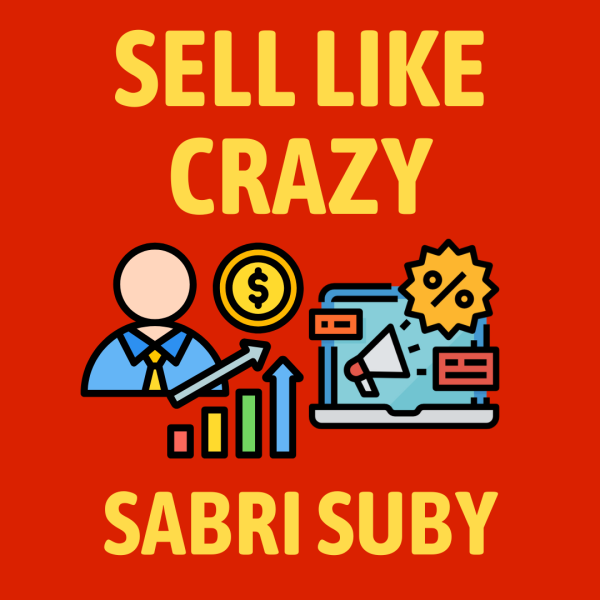
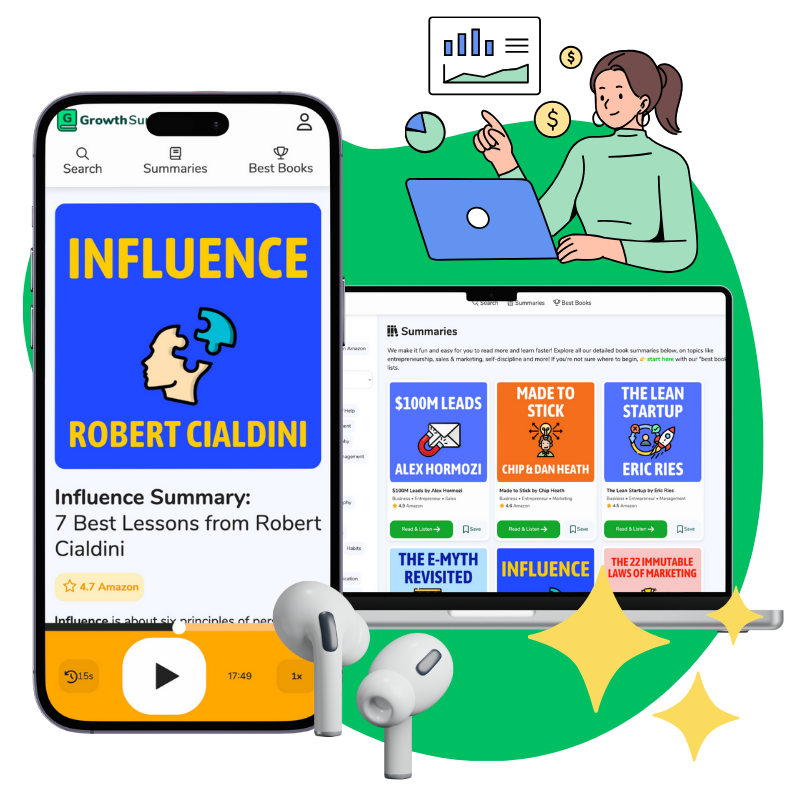
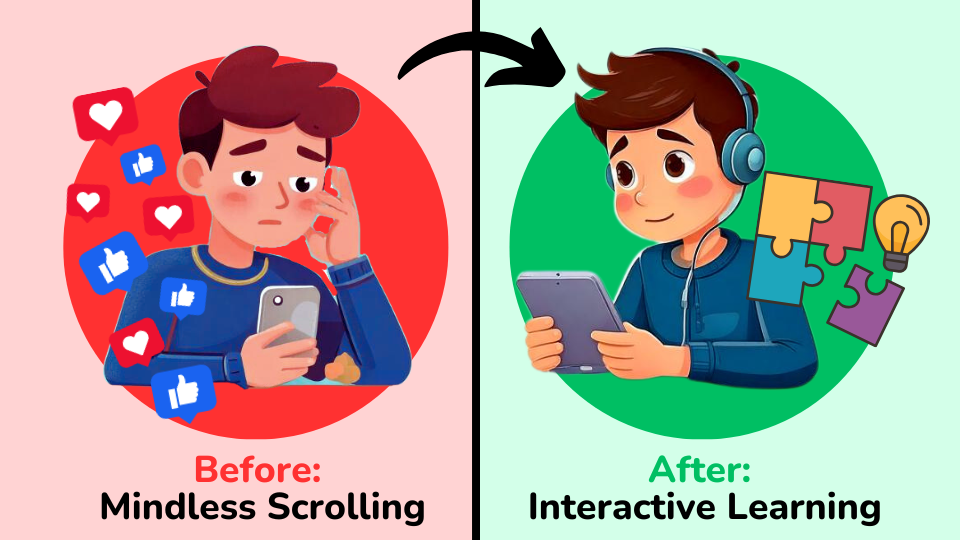









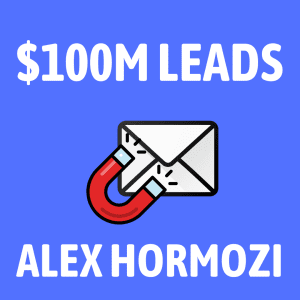
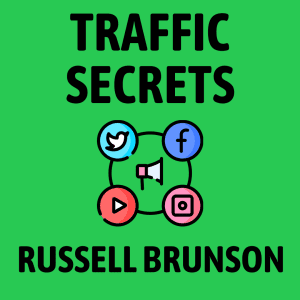

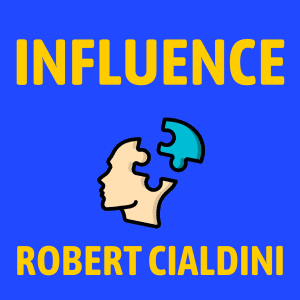



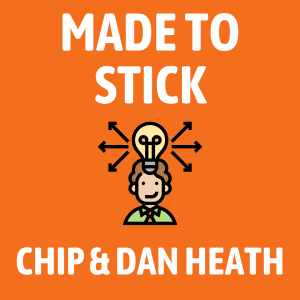
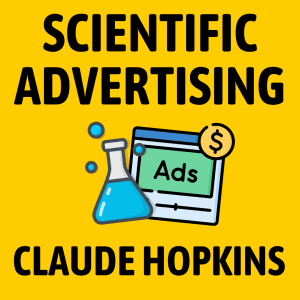
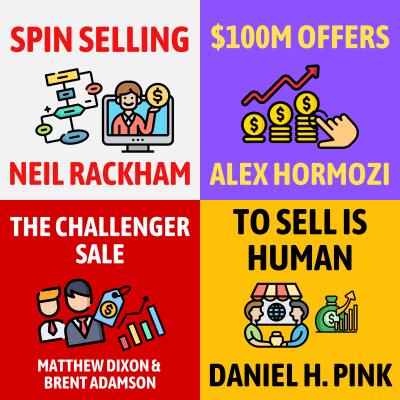
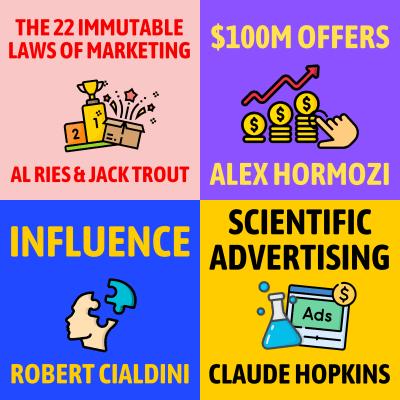
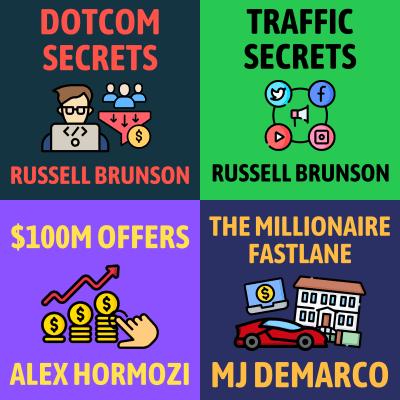

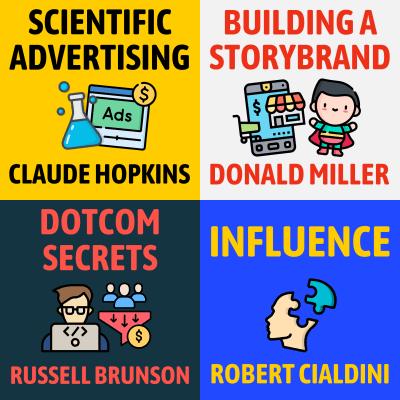
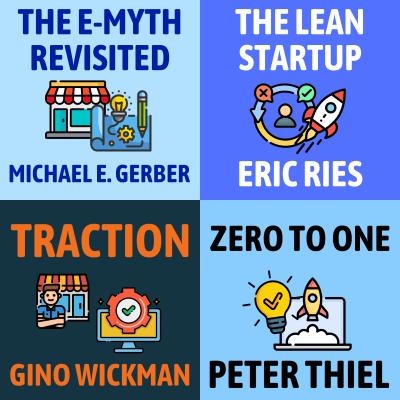
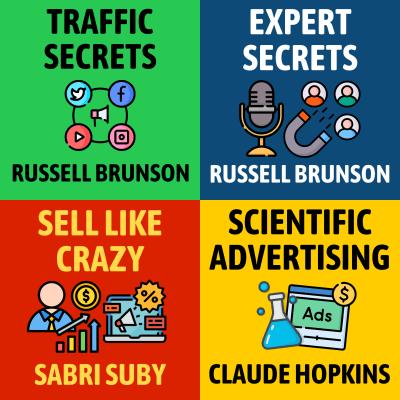
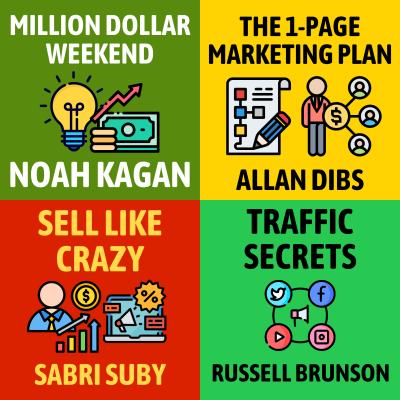
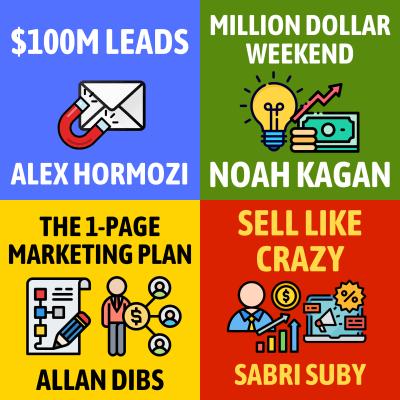
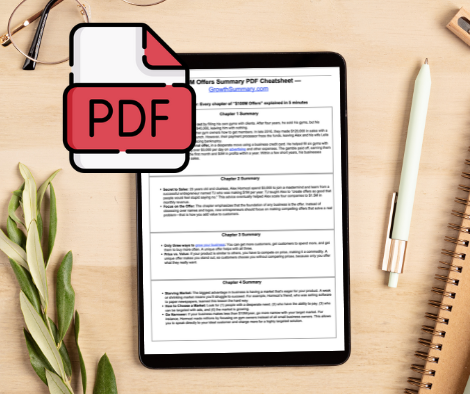
Community Notes